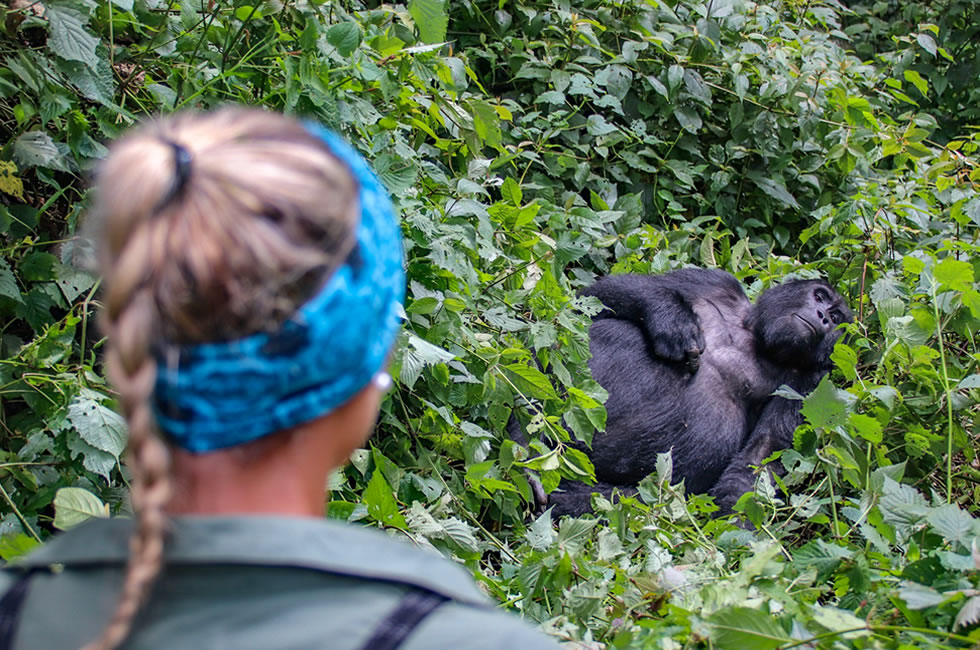Gorilla tourism has played a significant role in the conservation of mountain gorillas, particularly in the African countries of Rwanda, Uganda, and the Democratic Republic of Congo (DRC), where these endangered primates are found. The primary focus of gorilla tourism is to promote conservation efforts by generating revenue, raising awareness, and involving local communities. Here are some key details about how gorilla tourism contributes to the conservation of mountain gorillas:
Economic Incentives
Gorilla tourism generates revenue for the local economies and governments. The income generated from tourist visits contributes to funding conservation efforts, including anti-poaching measures, habitat protection, and community development projects.
By providing economic incentives, local communities are more likely to actively participate in and support conservation initiatives, as they see direct benefits from the presence of gorillas.
Community Involvement and Benefits
Revenue generated from gorilla tourism is often shared with local communities through various mechanisms, such as revenue-sharing programs or community development projects. This helps foster a sense of ownership and responsibility for the well-being of the gorillas among local residents.
Engaging local communities in conservation efforts is crucial for the long-term success of conservation initiatives, as they play a key role in protecting the gorillas’ habitat and preventing illegal activities.
Conservation Education
Gorilla tourism provides an opportunity for educational programs aimed at raising awareness about the importance of gorilla conservation, biodiversity, and the delicate balance of ecosystems.
Visitors to gorilla habitats often gain a deeper appreciation for the need to protect these animals and their environments, becoming ambassadors for conservation when they return to their home countries.
Enhanced Protection Measures
The presence of tourists acts as a form of protection for the gorillas. Tourist groups are accompanied by guides and park rangers who monitor the gorillas and their habitats, helping deter poachers and providing valuable data for research and conservation efforts.
Increased awareness among tourists about the importance of gorilla conservation contributes to a global understanding of the need to protect these endangered species.
Regulation and Monitoring
Governments and conservation organizations implement regulations to manage the impact of tourism on gorillas. This includes setting limits on the number of visitors, regulating the distance between tourists and gorillas, and implementing strict guidelines to minimize any potential negative effects on the animals.
Research Opportunities
Tourism provides researchers with the opportunity to observe and study mountain gorillas in their natural habitat. This information is crucial for understanding their behavior, health, and social structures. Research findings contribute to ongoing conservation strategies and management plans.
International Collaboration
Gorilla tourism often involves collaboration between governments, non-governmental organizations (NGOs), and international bodies to implement effective conservation measures.
Joint efforts help address transboundary issues, such as habitat fragmentation and poaching, which require coordinated actions across borders.
Success Stories
The success of gorilla tourism is evident in the increasing mountain gorilla populations in some areas. For example, the population of mountain gorillas in the Virunga Massif has shown a positive trend, attributed in part to successful conservation efforts linked to tourism.
Conclusion
While gorilla tourism has proven beneficial for the conservation of mountain gorillas, it is essential to strike a balance between tourism activities and the well-being of the gorillas and their ecosystems. Sustainable and responsible tourism practices are crucial to ensuring the long-term success of conservation initiatives.





